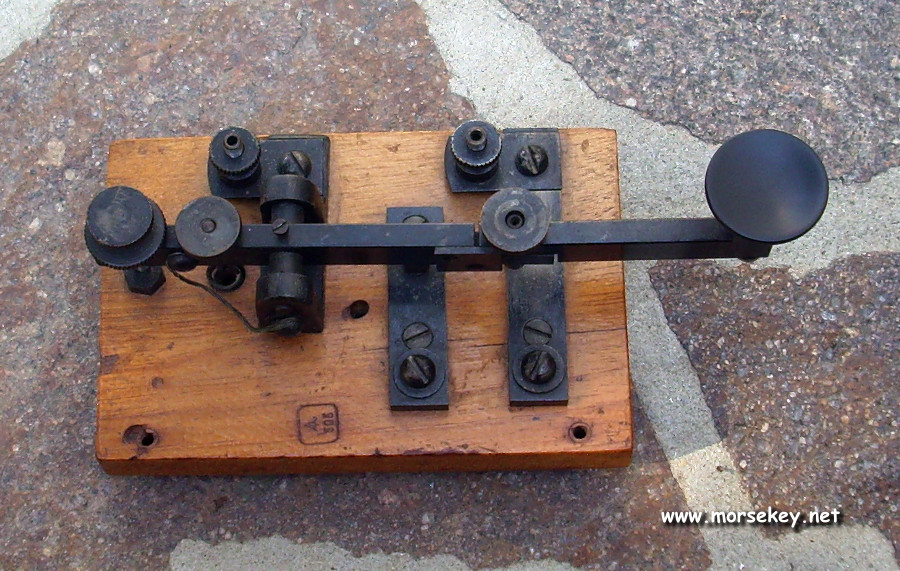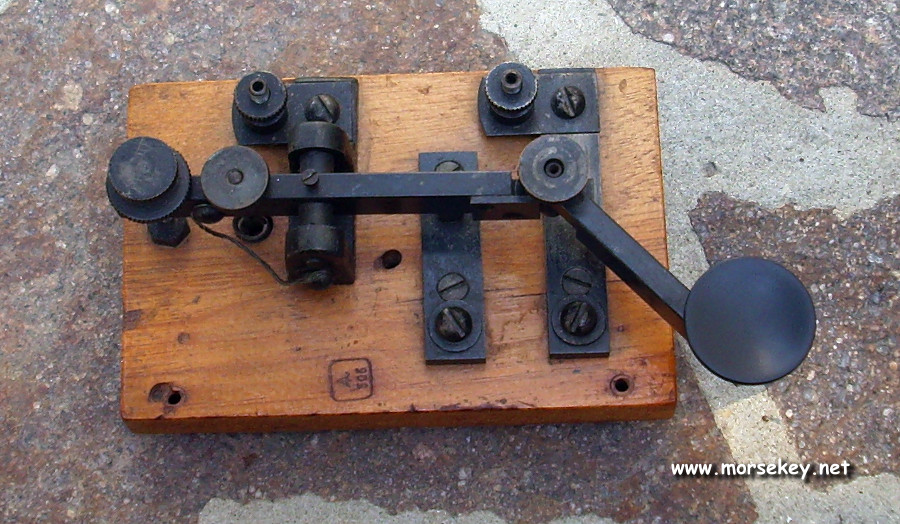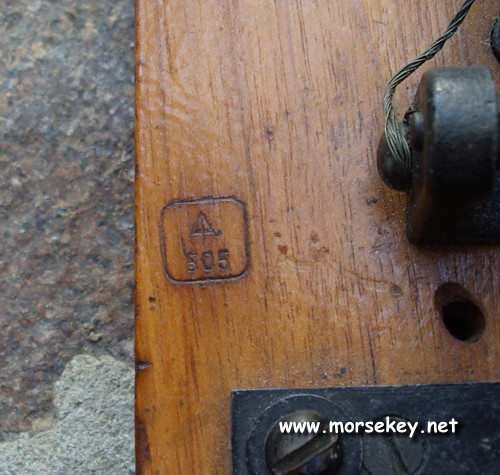Circa: W.W.I
Maker: Western Electric Co. Inc.
Used by: Signal Corps U.S. Army
( Comment from Herman vk2ixv )
The key was part of a SCR-71 Ground-Return Telegraph Trench radio Set (BC-16), basically a copy of the French TPS (La Telegrafie Par Le Sol = Earth Telegraphy). S.C.R. stands for Set Complete Radio or later Signal Corps Radio* and refers to the complete radio system, whilst B.C. means Basic Component and refers to a system component of the radio system. (Both SCR and BC are U.S. Army Signal Corps designations). Despite the conscientious efforts by government and industry, the limited duration of America's involvement in WW-I** left little time for the development and application of new technology, and the United States relied chiefly on Allied radio equipment and training, mainly French and British. The Broad Arrow and number marking which is usually found on British Made US Equipment is a British Govt inspectors stamp. Government inspectors were employed by the Govt to inspect the products made by the various companies. In this case, on top, the wood base has an engraved square, inside of which are the British Broad Arrow property stamp*** and the Inspector’s I.D. numbers 505. (British inspectors used their I.D. numbers below the broad arrow, whereas Australian Government Inspectors put their I.D. above the broad arrow). The key has a 5-5/32 x 3-3/8" wooden base. It is a telegraph key with an adjustable, folding lever (or rather: a lever that swings to the left side). The tension spring extends from the lever through the wood base. Larry Nutting K7KSW says that the Americans copied the J-3 from the British. The J-3 was used in the US Army set SCR-71 (BC-16). The British had the same type of set, with keys they made. Thus your key is like a J-3, but isn't an actual J-3 as it is the British version as indicated by the British arrow. Of course there is the possibility that some of the keys used in the American sets came from Britain, but I have no knowledge of that and if so doubt they would have the British arrow. Larry Nutting has in his collection two J-3 folding keys. One has "3A" stamped on base and I think is actual J-3 (actually would be J-3-A). The other has no marks but has British looking terminals. L.S. Brach Supply was one U.S. maker (maybe only one), but mine has no manufacturer’s marks.
About T.P.S. radio
Radio Engineers had long known that telegraph signals could travel a few hundred meters through the ground. In 1914 Frenchman Gustave-Auguste Ferrié recognized two things: the newly available electron tube could significantly extend the range of this technique and it might then be of enormous value in the fighting on the Western Front. Thus was born ground telegraphy or Earth-currents signaling. Ferrié made improvements in the signal generator and in the receiver, notably by the use of a triode amplifier, and achieved a usual range of several kilometers. The transmitter was essentially a buzzer (an electromechanical device that interrupts the circuit at a very high rate) powered by a battery. The receiver was an amplifier, employing a triode electron tube. Earth connections were usually made by driving steel pins into the ground; often a short length of insulated wire was laid along the ground and anchored at each end by a spike. These devices began to be used in large numbers in 1916, and by the end of the war the French had produced almost 10,000 of them for use by the Allies. Users of ground telegraphy discovered that their receivers frequently could pick up telegraph and telephone signals from lines buried nearby. They were thus used to tap enemy lines and also to receive one's own telegraph or telephone signals when a line had been severed. These receivers came to play a large role in eavesdropping. Its portability and its freedom from electrical lines made ground telegraphy an important means of communication during the Great War. It was a technique, however, that scarcely outlived the war. Even before war's end it began to be displaced by “real wireless” technique, where not the ground, but the ether is used as a medium to carry signals.
J-3 variations:
There are some differences between various J3's however. I have found those limited to the colour or finish of the wood base - some are painted, some are stained and varnished and the binding posts. Some are simply screw types, some conventional type with knurled hardware and some with very large Fahnstock clips. When the lid of the transmitter box is closed, part of the key lever and knob stick out and the key can be used. However, to protect the key during carrying and shipping, the lever can be folded and fits inside the box. The key is identical to the French folding key, integrated in the type 4 spark transmitter made by Radiguet & Massiot of Paris France. There was also a J3A key, which was a later version of the J3. In 1935 there appeared an ad in the QST magazine erroneously showing and describing a J-6 as a J-3. See my picture 37c. By the way, a copper wire or strip can be put between the LHS contacts, so that the key can be keyed from the larger RHS contacts.
Footnotes:
* SCR was initially designated as "Set, Complete Radio," later as "Signal Corps Radio," though interpretations have varied over time.
** The US only participated in WW-I from April 1917.
*** The Broad Arrow is the British military property stamp. It was also used by the governments of its Allies like Australia, New Zealand, South Africa and Canada.


